By way of distracting one’s nerves while awaiting England’s fate in the World Cup this evening, I did a bit of a check on what’s growing in the garden today and was pleased to find a good few things coming through.
Home-made chamomile tea is a favourite drink of mine, so it’s good to have two big clumps of plants on the go. One survived over winter from last year, while the other, a wild chamomile, started out as seeds in the propagator a few months back, was planted out just a few weeks ago and has thrived ever since.
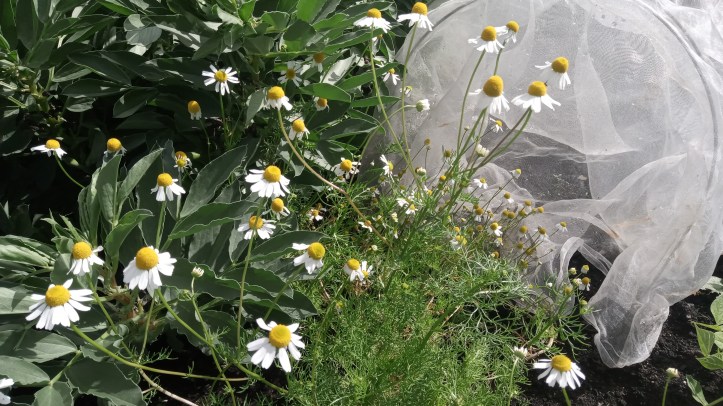
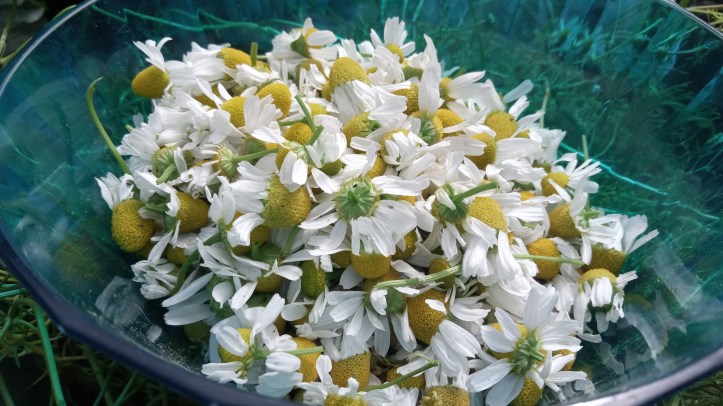
The flowers will dry naturally in a dish, so there’s no need to run the slightly tiresome dehydrator machine (noisy, slower than claimed and probably eats a lot of electricity). I’ll let them do so au naturel, crumble them and bag them up into fill-your-own tea bags. Only drinking one cup a day mind, to make them last.
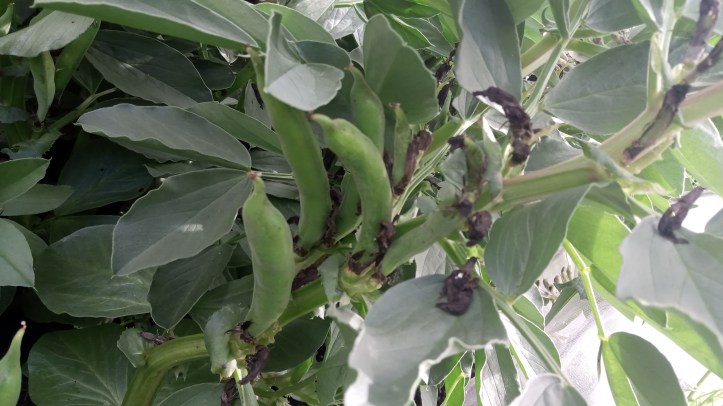
Elsewhere, the broad beans are forming nicely. These are the common dwarf variety ‘The Sutton’, which always seems to perform well. I’ve grown full-size broads in the past but they need an out-of-the-way space or they’re just ‘in the way’ (I grow in my own back garden rather than an allotment and it’s nice to still have a view of the garden out of the downstairs windows rather than a view blocked by whopping great plants and cane structures).

As are their neighbours the peas. Earlier in the season I found a small unlabelled bag of peas, I think from a variety pack of seeds, and threw them into some compost. Now they’re planted out, climbing healthily up some support netting and putting out their first pods. I can’t tell whether they’re meant to be mangetout, as they look at the moment, or are a true pea variety where the pods will fill out soon. I don’t mind to be honest – either is enjoyable.
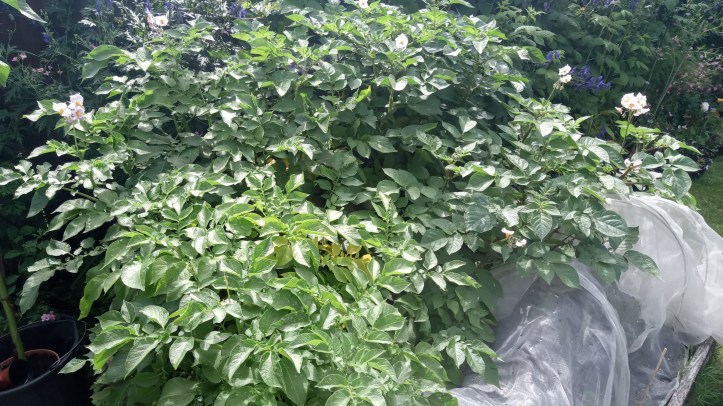
The four potato grow-sacks have now disappeared under an almost Amazonian potato leaf forest, which is now flowering. There are two varieties at play: Charlotte second earlies and Desiree maincrops. I heard just recently that spuds do best in poor soil, without being fed much. If that’s the case I must admit I’ve been doing it wrong, tending to put them in very good compost and adding fertilizer on occasions throughout the season. So I’ll just water them from now on and see how it goes. Will definitely try the spartan approach next year though.
The various fruits are doing nicely. Blueberries are starting to colour up and it’s heartening to watch the local families of blackbirds doing Cirque du Soleil-grade balancing acts to get at them. It does feel good to think of thirsty birds getting a nice juicy treat on the hot days at the moment.

And in the far corner the gooseberries are having a good year. With these, the strawberries and other soft fruits that are on the go, I’ve been sprinkling soft fruit feed granules from Marshalls on the surrounding soil at intervals and watering it in. It honestly seems to improve outputs.

Nearby there are little tomatoes forming on many of the dozen or so tomato plants. I’ve got a couple of the Crimson varieties (supposedly blight resistant to a degree) in pots in the open air, with others in tall versions of those plastic greenhouses. There’s Aviditas, Tomatoberry and a couple of small Tumbling Tom plants – all doing OK.
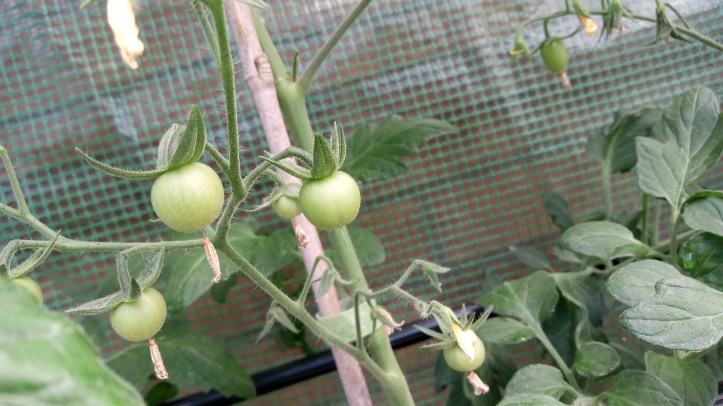
And under cover there’s a row of a super lettuce called Mazur, which I’ve grown before and is very crisp and frilly. Alongside it are rows of beetroot and carrots and another mesh tunnel housing a load of celeriac.
Nearby are more covers, housing half a dozen kale plants and some cut back purple sprouting broccoli plants from last year which are still putting out some nice usable leaves. So I’m keeping those going until some new PSB plug plants arrive later in the year.

Luckily I got the covers on just before the first cabbage white butterfly appeared in the garden a few days ago (or caterpillar factories as I call them). Their potential to devastate crops is not unknown to me: I still retain a nervous disposition from finding hundreds of caterpillars in one of the big raised beds when chopping down some failing leaf plants a few years back. So good covers pinned down over the brassica crops, a fine mesh, tightly secured, are a no-brainer round here.
Back to the fruity stuff, there are a couple of large bottles of rhubarb juice in the fridge, which only needed a little bit of stevia sugar to make it sweet enough to drink without wincing like I was eating a lemon. Praise here for the slow juicer I bought: despite the term ‘slow juicer’ making it sound inadequate, that seems to be a type of juicer which claims to extract more juice by virtue of spinning slower than other models. It certainly did the business with the mountain of rhubarb sticks I threw at it.
Finally come various chilli and sweet pepper plants, some of which are now fruiting – aided I’m sure by placing marigolds all over the place to attract the pollinating bees and hoverflies. The furthest ahead so far are a couple of ‘hot banana’ chilli plants.

These came from a surprisingly productive plant selection my sister bought me at Easter, pitched as a ‘grow your own salsa kit’. It had still small, young plants of those two chillis, the two tumbling tom tomato plants mentioned above and two coriander plants. Each is now re-planted and growing strongly; even the corianders are re-growing after I chopped them back when they ran to seed. It just shows where good produce can come from unexpectedly. I may even make that salsa at some point!
Good to see you’re still greenfingered in the garden, Bill. We too have a mountain of foliage & flowers on our potatoes – hope there’s something underneath. J
LikeLiked by 1 person
Thank you Jessamy 🙂 Yes, it’ll be that nervous turning over of the soil soon, hoping for enough for a pan of chips!!
LikeLike
Chamomile flowers bloom prior to dehydration? I get mine just prior to bloom, while they are still plump buds. I thought that is how it should be done.
LikeLike
You may be right Tony, they seem to flower very quickly here so that’s when I grab ’em. The tea tastes good anyway 🙂
LikeLiked by 1 person
Well, it may be a matter of preference too. Buds are likely more pungent than flowers.
LikeLiked by 1 person